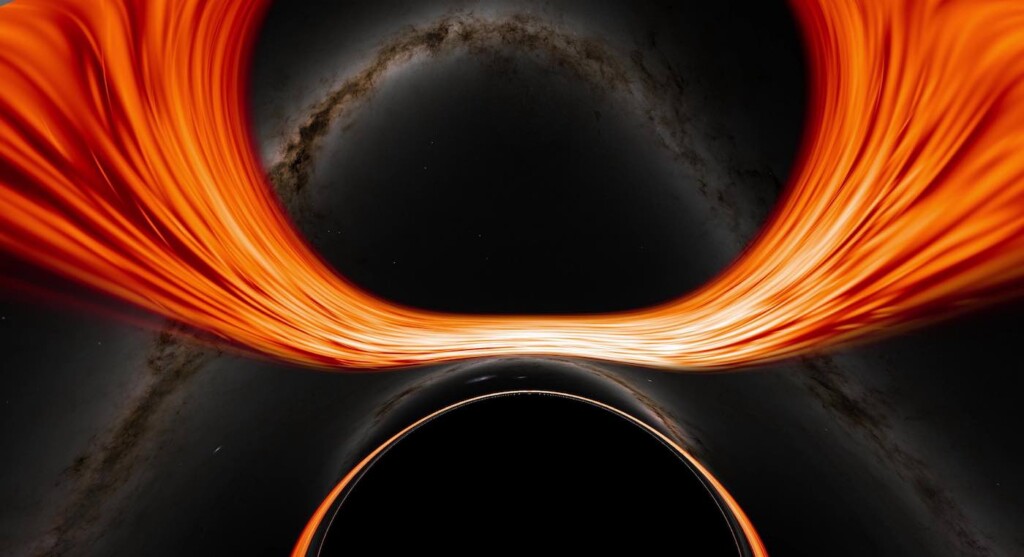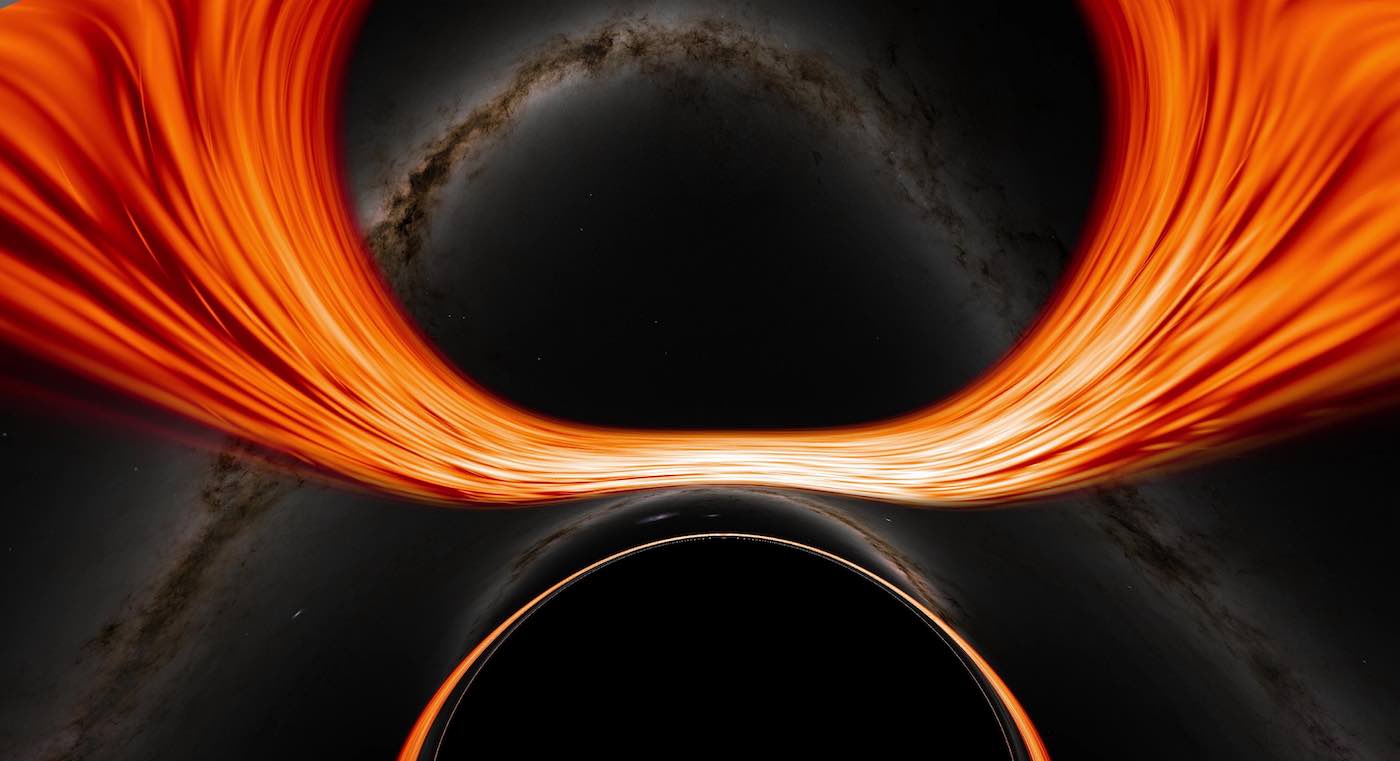
Relying on a supercomputer and the people with talent enough to use it, NASA scientists have produced a video illustration of what it would be like to float into a black hole if you were somehow invincible.
Being that within the event horizon of a black hole, the laws of general relativity break down, it’s extremely difficult to say or to predict what would happen to an object, but we do know from recent observations what can happen with light.
Several versions of the same simulation are explained in a 4-minute video released by NASA that offers visual aids to some extremely complex physics.
“People often ask about [what it would be like to fall into a black hole] and simulating these difficult-to-imagine processes helps me connect the mathematics of relativity to actual consequences in the real universe,” said Jeremy Schnittman, an astrophysicist at NASA’s Goddard Space Flight Center in Greenbelt, Maryland, who created the visualizations.
“So I simulated two different scenarios, one where a camera—a stand-in for a daring astronaut—just misses the event horizon and slingshots back out, and one where it crosses the boundary, sealing its fate.”
The video is more than just fluff, every feature of it corresponds with precise calculations that would have once been a published paper released to great acclaim. The simulation set the target as a supermassive black hole like the one at the center of our galaxy. The camera was set 400 million miles from the 25 million mile-wide black hole, and as it approaches, the hot disk of dust and gas that swirls around a black hole, called an accretion disk, begins to elongate and brighten.
READ MORE ABOUT A BLACK HOLE: Scientists Reveal Incredible Image of Magnetic Fields Spiraling from Supermassive Black Hole
This is the same effect as when the sound of an approaching racecar is amplified based on its speed.
Then, the supercomputer takes over, and the markers of light, namely the stars, the accretion disk, and a band of photon rings, which are thinner and made up of light orbiting inside the event horizon, begin to warp.
ALSO CHECK OUT: Eerie Echo Detected Coming From Milky Way’s Black Hole 200 Years Ago (Listen)
The project generated about 10 terabytes of data—equivalent to roughly half of the estimated text content in the Library of Congress—and took about 5 days what would have taken a normal computer a decade.
WATCH the video and enjoy…
SHARE This Amazing Video Project With Your Friends Who Dabble In Astrophysics…




















